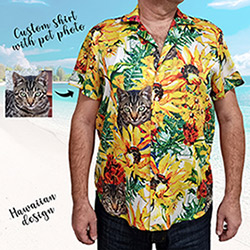How patent translation helps fashion brands expand internationally

The global growth of a fashion brand doesn’t solely rely on creativity or innovative designs. One of the less visible aspects of achieving international success is the protection of intellectual property. Patent translation plays a crucial role in this process.
How can an accurate version in another language ensure the legal protection of a design or technology in a different country? Why could a poor interpretation lead to legal issues or financial losses? The answers to these and other questions will be explored below.
The importance of patents in the fashion industry
Patents are a valuable asset for fashion brands aiming to stand out in the market. In this sector, innovation and exclusivity are key factors. These registrations protect unique technologies, designs, and manufacturing processes. However, rights over an invention are not universal. Each country has its own legal system, and what is valid in one may not be valid in another. For this reason, brands must ensure that these registrations are recognised in international markets.
An accurate version for global protection
The linguistic adaptation of such certificates goes beyond simply translating a document from one language to another. It requires a deep understanding of legal and technical terminology specific to the fashion sector. A faithful interpretation of the content ensures that intellectual property authorities in other countries fully understand the details of the protected design, technology, or process. In this way, fashion brands can prevent competitors from copying their innovations or losing their intellectual property protection due to translation errors.
Patent translation prevents legal issues
Inaccurate translations of industrial property records can have serious consequences for a fashion brand. Misunderstandings in the wording can result in legal disputes, invalidation of intellectual property rights, or the inability to defend a design in international courts. Fashion brands expanding their operations to countries with strict intellectual property laws must ensure that their records are presented in a way that meets the legal requirements of each jurisdiction.
Overcoming regulatory barriers in international markets
Every country has its own regulations regarding patents. Requirements vary in terms of necessary documentation, deadlines, and local intellectual property laws. When translating a registration, fashion brands must ensure that the text complies with local requirements. This may include adapting legal terms or including specific information according to the country’s regulations. This level of detail enables brands to overcome regulatory barriers and avoid delays or rejections in protecting their innovations.
Protection against patent infringement
Patent protection is not just about securing exclusive rights over a creation. It has become a powerful tool to prevent competitors from infringing on those rights in other countries. With properly translated patents, fashion brands can identify potential violations in foreign markets and take legal action to enforce their rights. Without an accurate version of the document, a brand may struggle to prove that its intellectual property rights are being infringed, putting both its reputation and revenue at risk.
Facilitating expansion into new markets
For those looking to expand globally, translating these types of documents is a strategic investment. Protecting innovations in new markets helps prevent unfair competition and creates an environment of trust. Brands with properly translated and recognised registrations in other countries have an easier time negotiating partnerships, obtaining licences, and accessing new business agreements. Without strong protection, expansion could lead to legal issues that hinder the brand’s growth.
Avoiding misunderstandings and commercial disputes
Fashion brands entering new markets must be prepared to compete with both local and international players. Patent translation helps avoid misunderstandings that could escalate into disputes. For example, if a local competitor believes that a patent registration is invalid in their country due to a poor translation, they may challenge it or copy the design. A proper legal adaptation lays the foundation for peaceful resolution and prevents unnecessary conflicts.
The role of specialised translators
Not all translators are qualified to translate patent documents. To ensure high-quality work, fashion brands should rely on specialised translators who understand the technical and legal terminology involved in intellectual property records. These professionals understand the nuances of intellectual property law and can translate not only the text but also the intent and scope of the requested protection. Collaborating with expert translators increases the chances of the patent being accepted without objections in different countries.
Hits: 7447 | Leave a comment
Tags:patents, fashion brands

















